

50 years ago: A look back at the highlights from the 1974 NHRA season
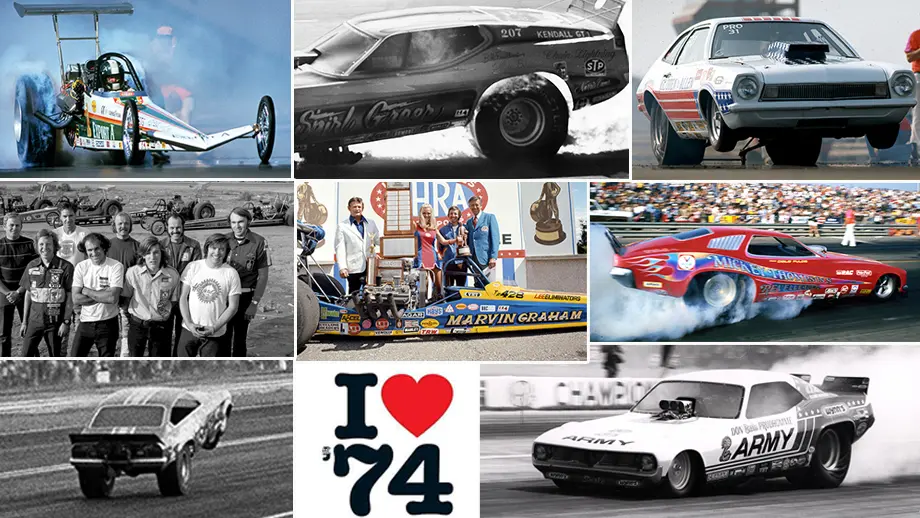
As I’ve done the last three years, it’s time once again to step into the Dragster Insider Wayback Machine and set the dials for 50 years ago and a return to the 1974 NHRA season.
Once again, I’ll take a look back at the way things were, including the schedule, performance markers, and big moments on and off the track.
THE SCHEDULE
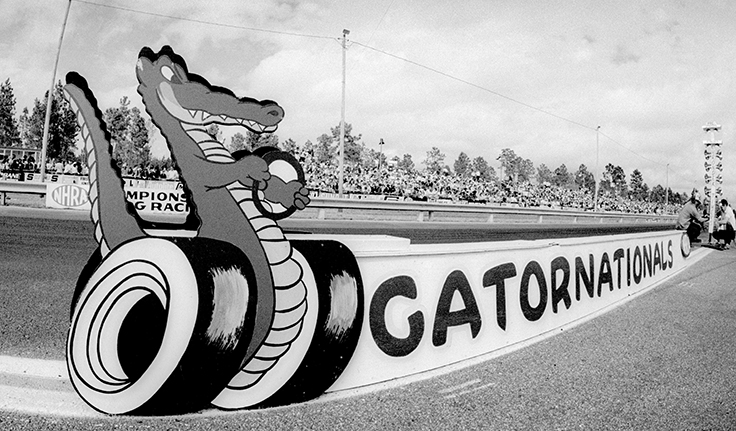
For the third straight season, the NHRA national event schedule remained basically unchanged with the Winternationals, Gatornationals, Springnationals, Summernationals, Le Grandnational, U.S. Nationals, and the World Finals. However, it wasn’t until April that NHRA announced that the World Finals would move from its three-year home in Amarillo, Texas, to Ontario Motor Speedway in Southern California, where it would be combined with the NHRA Supernationals, a previously non-points-earning event since its inception in 1970.
The 1974 season would be the first time that the world champions were not crowned as the result of victories at the World Finals, but now based on seasonlong points, as we have done every year since.
NHRA also announced the creation of the Sportsman-only SPORTSnationals, to be held in late May at Beech Bend Int'l Raceway in Kentucky.
THE GAS CRISIS

Much of the world, including the United States, was still reeling from 1973’s OPEC oil embargo, which caused gasoline shortages and long lines and skyrocketing costs at the pumps for consumers. President Richard Nixon level lowered the national speed limit to 55 mph to help conserve fuel.
Doing its part to alleviate the energy crisis, NHRA complied with the Federal Energy Office committee's request for a voluntary cutback in fuel used in the production of leisure-time activities and shortened the Winternationals from four days to three days, and reduced the number of divisional events by 20%.
Among other recommendations made by NHRA to its Member Track Network were a reduction in total operating days and hours per day at each event, practical reductions in field sizes, a concentration on daytime events vs. night-lighted events, less illumination of non-critical areas at tracks, and limitations on available total runs per car.
“These represent but a few of the feasible ways in which energy-source fuels can be saved without damage to the sport,” NHRA said in a statement in NHRA National Dragster. “Individually, each may contribute little. But collectively, they all add up to a lot of valuable savings opportunities.”
Fortunately for all involved, the oil embargo was lifted in March, though gas prices, which had jumped from an average of 38 cents per gallon to 55 cents (a 44% increase), remained high.
On a parallel but not necessarily related subject, late in 1974, NHRA officials met with a consortium of big-name fuel racers who asked NHRA to consider a ban on nitromethane fuel in an attempt to control spiraling costs. After a majority of fuel racers voted to retain nitro, NHRA opted not to take the step.
PERFORMANCE

Don Garlits’ Top Fuel national records of 5.784 and 247.25 mph, recorded at the 1973 Supernationals, survived the entire 1974 season, though Gary Beck would run faster (a non-backed-up 248.61 at the World Finals) and both Beck and Garlits would also run 247.25 mph, in Ontario and Columbus, respectively. There were no 5.7-second Top Fuel runs in 1974 and only Beck (5.84 in Pomona), James Warren (5.88 in Ontario), and Garlits (5.89 in Ontario) ran in the 5.80s.
(That being said, "T.V. Tommy" Ivo did receive a 250.00-mph time slip during a June 9 match race at Suffolk Raceway in Virginia, though the speed was widely disputed, just as his notorious 5.97 clocking in 1972 had been.)
Entering the 1974 season, Don Prudhomme’s 6.169 from the ’73 Supernationals was the quickest Funny Car pass and Pat Foster’s 235.64-mph blast from 1972 was still the fastest.
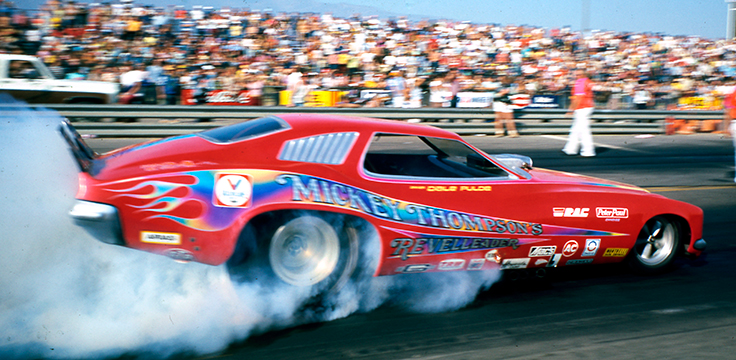
Although Prudhomme was credited with a questionable 6.01 during a match race at Lebanon Valley Raceway in New York in August, the best run at an NHRA national event was 6.161 by Dale Pulde in Mickey Thompson’s Grand Am, a run recorded in round two at Ontario with, ironically, Prudhomme losing in the other lane. Pulde also set top speed of the season, 233.76 mph, in the next round in Ontario but lost on a wild semifinal holeshot to eventual event winner Dave Condit, 6.177 to 6.191, in what was then the quickest side-by-side race in Funny Car history.
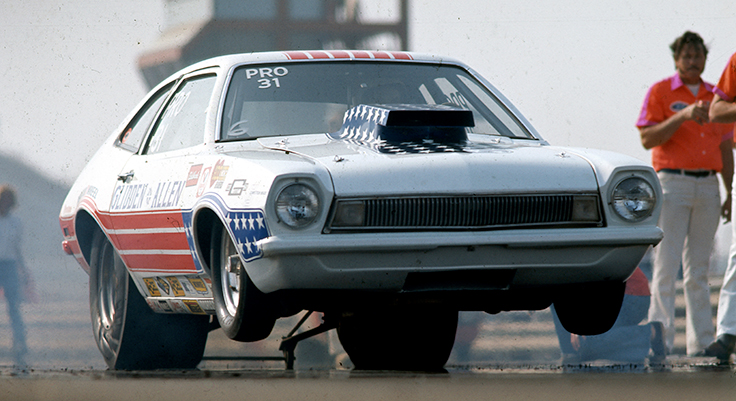
The Pro Stock record by 1973 season’s end was 8.870 (Wayne Gapp) and 152.80 mph (Bob Glidden), both recorded at the season-ending event in Ontario. The speed mark was bettered at pretty much every 1974 event but — stop me if you’ve heard this before — the year’s best numbers came in Ontario, where Glidden set low e.t. and top speed at 8.811, 154.63.
AND THE WINNERS ARE ….
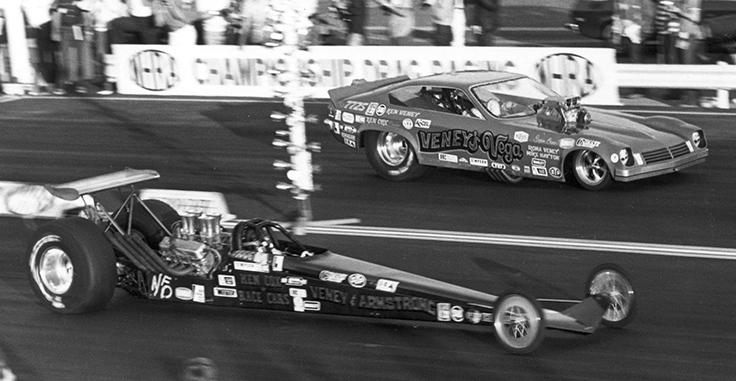
Gary Beck (Top Fuel), Dale Emery (Funny Car), and Bill Jenkins (Pro Stock) took the top titles at the Winternationals, and future nitro greats Ken Veney and Dale Armstrong battled for Pro Comp honors in a pair of Veney-owned cars. "Double-A Dale” took the win in the A/FD, 6.90 to Veney's BB/FC time of 7.09. Lee Shepherd, who in just a few years would become the most feared Pro Stock driver on the planet, scored his first career win in Modified eliminator.

Prudhomme had started the year with a trick, lay-down-style Vega Funny Car that proved just a little too trick, so he reverted to 1973’s Indy-winning Barracuda for the Gatornationals, which he won for his new sponsor, the U.S. Army, the first of 24 wins he’d score in the red, white, and blue colors that also covered his Monzas, Arrows, and Horizons through the end of 1980. “Snake” beat Don Schumacher (who, interestingly, had his own trick, low-riding Vega) in the final. Dave Settles won Top Fuel in the Candies & Hughes dragster and, in a major upset, Wally Booth won Pro Stock in his AMC Hornet, the first of but a handful of wins for the carmaker.

The first SPORTSnationals was a huge success. Jimmy Scott set a national record in winning Pro Comp in the Weiss & Scott AA/Dragster; Dick Kreiger won Comp and was joined in the winner's circle by Paul Mercure (Modified), Bobby Warren (Super Stock), and Joe Moore (Stock). The SPORTSnationals had a carnival atmosphere as the track also boasted an amusement park. Racers and officials rode roller coasters and giant slides and participated in big barbecues, roller-skating, and horseback riding together.

Beck bounced back from his Gainesville runner-up to win Top Fuel over March Meet champ Carl Olson at the Springnationals en route to the season championship. Gene Snow upset Prudhomme for Funny Car honors on a Sunday when Prudhomme had the field covered by two-tenths before Snow eked out final-round lane choice by two-thousandths of a second and put Prudhomme in the “bad” lane in the final. It was Snow’s first win in four years, dating back to his dominating 1970 season. Bob Glidden snagged the first of nine career Springnationals Pro Stock titles and just the second of what would be an NHRA record 85 wins. His first career win had come the year before in Indy.
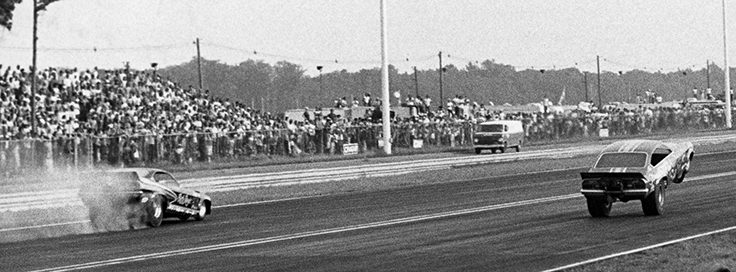
Dale Funk in Top Fuel and Al Segrini in Funny Car both scored their first career wins at the Summernationals. Funk took down Gatornationals champ Settles while Segrini's win came in one of drag racing's most memorable finals, versus "Jungle Jim" Liberman, whose Vega carried a five-foot wheelstand to three-quarter-track. Larry Lombardo, in Bill Jenkins' Vega, won Pro Stock over the radical four-door Gapp & Roush Maverick, built to take advantage of a weight break due to its longer wheelbase.

The upsets continued in Funny Car as Shirl Greer, who would go on to win the world championship, scored his first win at the rain-delayed Le Grandnational-Molson in Quebec, besting first-time finalist Kosty Ivanoff in the money run. Adopted Canadian Gary Beck (actually born in Seattle) scored a popular victory in Top Fuel for his Canadian sponsor, Export A Cigarettes, with Settles again getting runner-up honors. Gapp's Maverick, now dubbed the Taxi, collected the winner’s fare in Pro Stock over Glidden.

Oklahoma television repairman Marvin Graham became "Marvin Who?" after upsetting the Top Fuel field at the U.S. Nationals, completing his stunning victory by defeating 1973 Supernationals runner-up R. Gaines Markley in the final.
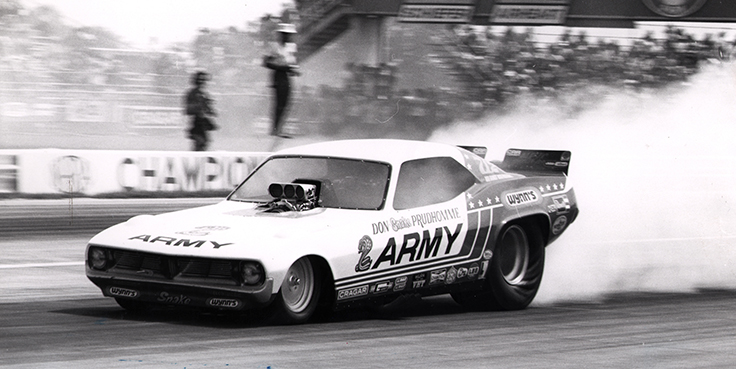
Prudhomme won the Indy Funny Car title for the second straight year and collected his fifth of seven U.S. Nationals crowns when he stopped teenage phenom Billy Meyer, the low qualifier (6.297) and low e.t. (6.197) setter, in the Funny Car final. Like Prudhomme, Glidden won his second straight Indy title, besting “Dyno Don” Nicholson in the final. The race was completed on Tuesday after rain wiped out eliminations Monday.
With just the Supernationals/World Finals and a handful of divisional races remaining, the Pro points leaders after the U.S. Nationals were Beck (Top Fuel), Paul Smith (Funny Car), and Booth (Pro Stock), though only Beck would hold on.
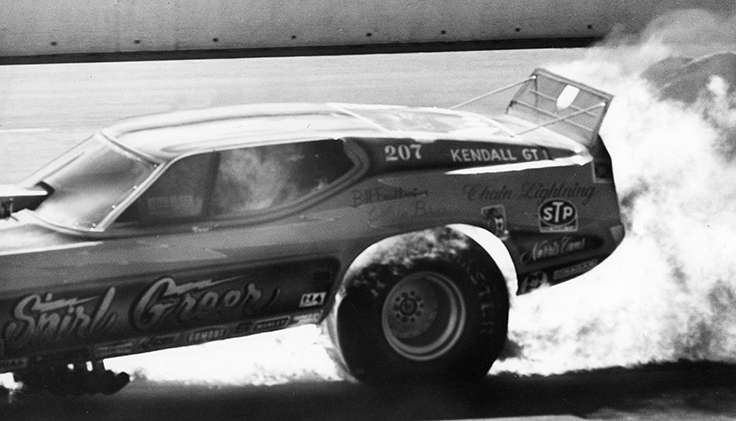
Greer overcame a terrifying qualifying fire at the Supernationals that burned off the back half of his Mustang and severely burned his hands to outlast Prudhomme and Smith for the world championship in one of the most dramatic Funny Car conclusions ever. Glidden's Pro Stock win vaulted him past Booth and Gapp and on to his first world championship. Garlits won Top Fuel (his only NHRA title of the year), but Gary Geck won the world championship, and, continuing a season of first-time winners in Funny Car, Southern Californian Dave Condit took Funny Car honors at the season finale.
IN OTHER RACING NEWS
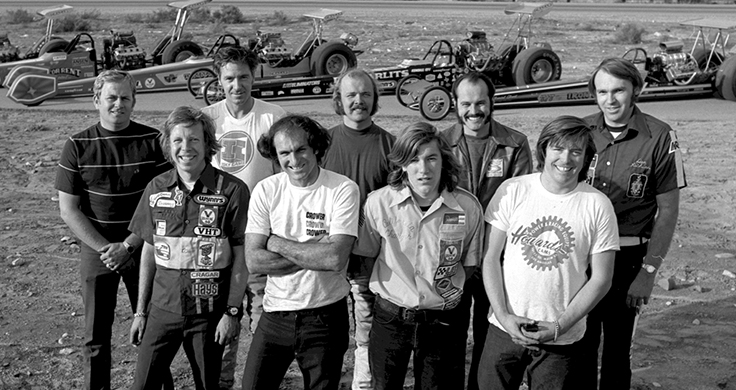
In January, Don Garlits won the first Cragar Five-Second Club race, held in conjunction with the annual Grand Premiere at Irwindale Raceway and pitting the club's eight current active members: Don Garlits, Don Moody, Gary Beck, James Warren, Tommy Ivo, John Stewart, Larry Dixon Sr., and Dan Richins (Mike Snievely, who opened the club, was not competing at the time). Dixon's engine exploded on the starting line in the final in one of the most violent and memorable blasts. At the same event, "Wild Wilfred" Boutilier became the first Pro Comp driver to run in the sixes with a 6.98.

Carl Olson won Top Fuel at the famed Bakersfield March Meet, becoming the 14th member of the Five-Second Club in the process; Ed McCulloch took Funny Car honors. Following a fad of the time, a streaker ran naked down the Bakersfield quarter-mile just before the Top Fuel final. Later that year, Olson announced his retirement from Top Fuel competition and took over public relations for the team, which hired Billy Tidwell as its driver for 1975. Olson would join the NHRA in 1976.

Frank "the Beard" Bradley became the 16th and final member of the Cragar Five-Second Club with a 5.97 blast at California's Orange County Int'l Raceway June 29. Here's the complete list:
Cragar Five-Second Top Fuel Club |
|||
1. Tommy Ivo |
Oct. 22, 1972 |
5.97 |
New Alexandria, Pa. |
2. Mike Snively |
Nov. 17, 1972 |
5.97 |
Ontario, Calif. |
3. Don Moody |
Nov. 17, 1972 |
5.91 |
Ontario, Calif. |
4. Don Garlits |
July 7, 1973 |
5.95 |
Portland, Ore. |
5. Gary Beck |
Sept. 3, 1973 |
5.96 |
Indianapolis |
6. James Warren |
Oct. 13, 1973 |
5.97 |
Fremont, Calif. |
7. Larry Dixon Sr. |
Nov. 16, 1973 |
5.94 |
Ontario, Calif. |
8. Dan Richins |
Nov. 16, 1973 |
5.93 |
Ontario, Calif. |
9. John Stewart |
Nov. 16, 1973 |
5.92 |
Ontario, Calif. |
10. Pete Kalb |
Jan. 26, 1974 |
5.96 |
Phoenix |
11. Jerry Ruth |
Jan. 27, 1974 |
5.95 |
Phoenix |
12. Dwight Salisbury |
Feb. 2, 1974 |
5.97 |
Pomona |
13. Dwight Hughes |
Feb. 2, 1974 |
5.97 |
Pomona |
14. Carl Olson |
March 10, 1974 |
5.94 |
Bakersfield |
15. Gary Ritter |
March 23, 1974 |
5.84 |
Sacramento, Calif. |
16. Frank Bradley |
June 29, 1974 |
5.96 |
Irvine, Calif. |
Billy Campbell was the upset Top Fuel winner of the prestigious Popular Hot Rodding Championships; Prudhomme and Gapp joined him in victory.

The West team won the highly touted A&W Root Beer-sponsored United States Funny Car Team Championships at Irwindale Raceway, which featured six drivers from the four compass points competing in three rounds for total points. The West finished with 13 wins, just ahead of the East's nine.
Garlits closed 1974 with a Top Fuel win at the Snowbird National Open in his native Florida in December. Raymond Beadle won the Funny Car title in Harry Schmidt's new Blue Max Mustang II, portending his rise to championship caliber over the next half-decade.
NHRA NEWS

Dallas Gardner, who had joined NHRA the previous September as a financial consultant, was named to the NHRA board of directors and elected treasurer. Ten years later, Gardner would be named NHRA’s second president, succeeding Wally Parks.
Jim Dale was named NHRA national tech director and Bill "Farmer" Dismuke became head of the Technical Services department.
Division 1 Tech Director Greg Xakellis became a full-time NHRA employee, assisting Division Director Darwin Doll. Xakellis would ascend to the Division Director role in November 1978.

Weber Performance Products became the sponsor of the NHRA safety team, which was renamed the Weber/NHRA Safety Safari.
In June, NHRA held its first meeting with the newly formed Sponsors Council to establish channels of communication between NHRA and the manufacturers who support drag racing.
In November, Brian Tracy, formerly a marketing specialist with Anheuser-Busch, joined NHRA as director of marketing and was soon promoted to Vice President level.
NEW RULES
In the same year that Paul McCartney and his new band Wings were rocking the charts with their hot single “Jet,” NHRA adopted a jet-car licensing program; Romeo Palamedies' Untouchable dragster was the first approved by the new program and wheelman Roger Gustin was its first licensed driver.
Late in the year, NHRA announced its new Par System for the 1975 season, the forerunner to today's class index structure. When NHRA released the new "index" numbers, curiously, they were not expressed in e.t.s as they are today. The eliminator's fastest class (such as A/Dragster in Comp) had an index of .00, B/Dragster's index was .25, and so on, reflecting their handicaps against one another in this no-breakout system.
PASSINGS

Calvin Rice, winner of the first NHRA Nationals in 1955, died of cancer in January at the age of 46.
1973 Division 5 Pro Stock champ Irv Beringhaus was fatally injured in a racing accident at Beeline Dragway in Arizona during a pre-season event.
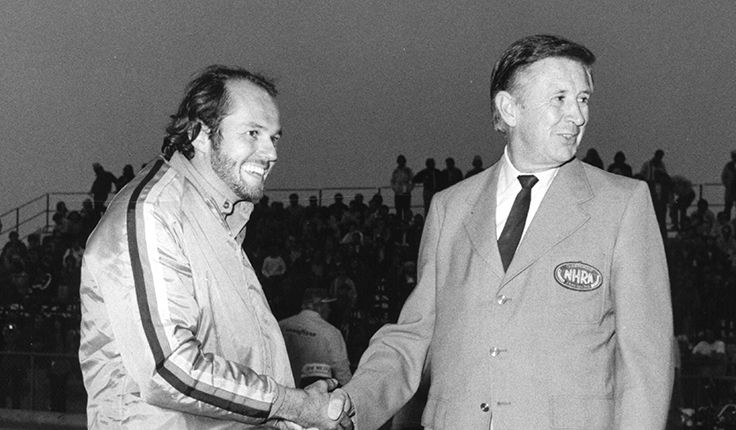
Mike Snively, Top Fuel winner at the 1966 Winternationals and U.S. Nationals and the first Top Fuel driver to record a five-second e.t., died in March. He was just 30 and had been suffering from terminal cancer before taking his own life.

Dave Anderson, the driver of the popular Pollution Packer rocket car and the first driver officially licensed by NHRA to drive one of the hydrogen-peroxide-powered machines, died of injuries suffered at the end of an exhibition run at a non-NHRA race in North Carolina in April.
OK, race fans, that’s a 50-year look in the rear-view mirror of history at the 1974 season as we all eagerly await the start of the 2024 season, which this year again launches in Gainesville. See you there?
Phil Burgess can be reached at pburgess@nhra.com
Hundreds of more articles like this can be found in the DRAGSTER INSIDER COLUMN ARCHIVE
Or try the Random Dragster Insider story generator



















































